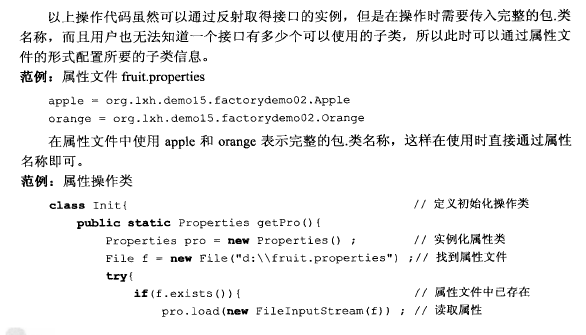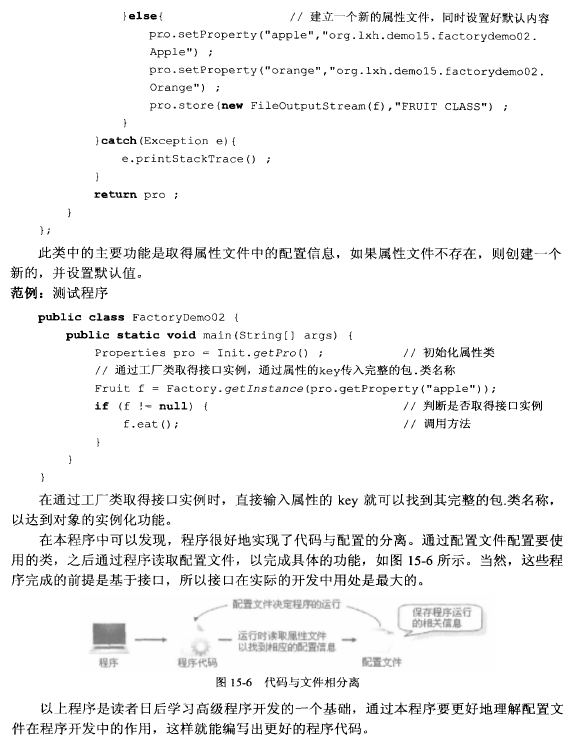Java工厂设计模式
工厂模式的核心思想就是把创建对象和使用对象解藕,由工厂负责对象的创建,而用户只能通过接口来使用对象,这样就可以灵活应对变化的业务需求,方便代码管理、避免代码重复。
1.工厂设计模式的例子:水果,苹果和橘子
程序在接口和子类之间加入一个过渡类,通过此过渡类端取得接口的实例化对象,一般都会称这个过渡端为工厂类
interface Fruit{
public void eat();
}
// Apple类实现了Fruit接口
class Apple implements Fruit{
@Override
public void eat() {
System.out.println("eat apple!");
}
}
// Orange类实现了Fruit接口
class Orange implements Fruit{
@Override
public void eat() {
System.out.println("eat orange!");
}
}
// 定义工厂类
class Factory{
public static Fruit getInstance(String className){
Fruit f = null; //定义接口对象
if("apple".equals(className)){ //判断是哪个类的标记
f = new Apple();
}
if("orange".equals(className)){ //判断是哪个类的标记
f = new Orange();
}
return f;
}
}
public class factory {
public static void main(String[] args) {
Fruit f = null; //定义接口对象
f = Factory.getInstance("apple"); //通过工厂取得实例
f.eat(); //调用方法
}
}
2.将反射应用在工厂模式上
为了能不修改工厂方法

interface Fruit{
public void eat();
}
class Apple implements Fruit{
@Override
public void eat() {
System.out.println("eat apple!");
}
}
class Orange implements Fruit{
@Override
public void eat() {
System.out.println("eat orange!");
}
}
// 定义工厂类
class Factory{
public static Fruit getInstance(String className){
Fruit f = null; //定义接口对象
try{
f = (Fruit)Class.forName(className).newInstance(); //实例化对象
}catch(Exception e){
e.printStackTrace();
}
return f;
}
}
public class factory {
public static void main(String[] args) {
Fruit f = null; //定义接口对象
f = Factory.getInstance("Apple"); //通过工厂取得实例
f.eat(); //调用方法
}
}
3.结合属性文件的工厂模式


本文只发表于博客园和tonglin0325的博客,作者:tonglin0325,转载请注明原文链接:https://www.cnblogs.com/tonglin0325/p/5241284.html



